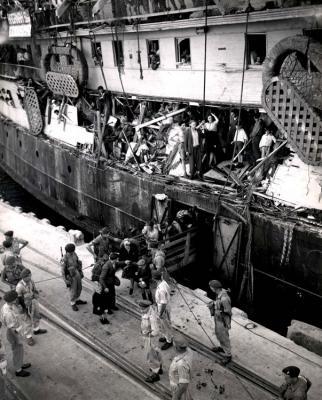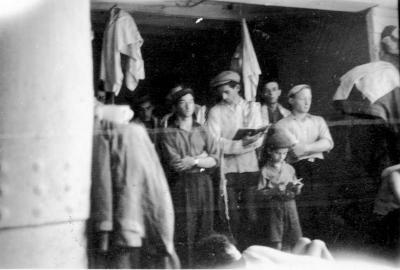
AP Photo


Yad Vashem Photo Archive


Yad Vashem Photo Archive

At Yad Vashem, individuals learn the fact-based stories of the Holocaust through its museums, International School for Holocaust Studies, publications, International Institute for Holocaust Research, and more. One example is that of Exodus – the saga of the refugee ship that for over seven decades has captivated and inspired millions around the world.
The bestselling 1958 novel by Leon Uris, Exodus tells the story of the eponymous immigration ship and the birth of the State of Israel. In the novel, Holocaust survivors held at the Karaolos detention camp set up by the British in Cyprus, boarded the Exodus. The plan, at the helm of which was Zionist activist Ari Ben Canaan, was to bring the refugees to British Mandatory Palestine – albeit illegally, as at that time the British were not permitting Jewish immigration to Eretz Israel. Upon learning of the ship’s voyage, the British blockaded the area and prevented the ship from sailing further. The refugees went on hunger strike and Ben Canaan wired the ship with explosives, threatening to blow it up if the British attempted to board. When the British tried to buy time, Ben Canaan declared that ten children would commit suicide each day for the world to witness their desperate plight. The British caved in and the ship sailed to its destination. In 1960, the novel was turned into an award-winning feature film.
Uris’s novel sheds light on the history of survivors attempting to rebuild their lives after the unimaginable traumas they had experienced during the Shoah, and the choice by many to immigrate to their ancient homeland, despite the difficulties involved. The story has become famous in the tale of the centuries-long Zionist struggle for a Jewish state. However, how historically accurate is Uris’s story?
The real "Exodus" voyage was organized by the Mosad Le’Aliya Bet, an agency assisting Jews to immigrate illegally to Mandatory Palestine. The organization obtained an old American ship, the President Warfield, and in July 1947, loaded it with Jewish refugees, the vast majority of them Holocaust survivors residing in displaced persons camps in Germany. Unlike the book, in which the ship leaves from Cyprus with around 300 Jewish children, in the real story, some 4,500 passengers of various ages left from the port of Marseilles, France. Once the ship reached open waters, its name was changed to Exodus 1947, connecting the struggle of Holocaust survivors to the Jewish people's biblical migration from Egyptian slavery towards freedom and nationhood.
Prior to reaching Mandatory waters, the British apprehended the ship and its passengers, and forced the vessel to dock in Haifa. They removed the passengers, and in the ensuring battle, the British killed three and wounded many more. The refugees were then placed back on three ships and forced to sail back to France. There, the ships floated on the coast for three months, with the French refusing them to disembark. Here is where Uris’s novel and the true story collide: The passengers indeed decided to go on hunger strike, which caught the world’s attention. In contrast to the book, however, the British did not relent, and Foreign Minister Ernest Bevin ordered the refugees to return to the displaced persons camps in Germany, where most remained until the establishment of the State of Israel in May 1948. The last of these Holocaust survivors finally arrived in Israel in 1949.









